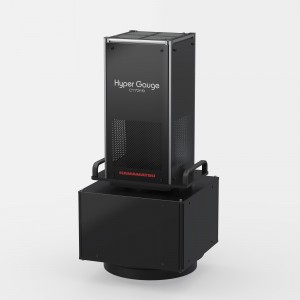
Cataracts are a major cause of blindness throughout the world; however, once detected, they are highly treatable. They are caused by chemical reaction called Maillar reactin, which causes glycation. Cataract are actually just a clouding of the lens of the eye, but it affects 95 million people worldwide. Even as cataract treatment has become safer and simpler to perform, people with limited or no access to proper eyecare will suffer preventable blindness and visual impairment. It is a slow process, where glucose reacts with proteins in eyes. Just like when food is cooked, it browns due to the glucose in it.
In the past, cataracts were diagnosed by eyecare professionals using slit-lamp instrumentation, which allows them to see the eye lens under magnification and then compare those visuals with a special color chart. Although this method is safe and effective, the development of simpler, faster, more portable diagnostic tools could reach even more patients in need. Ocean Insight and a research team led by Ghent University worked together to investigate faster, simpler medical diagnostics tools with the capacity to improve eyecare for millions of people
Most cataracts result from a chemical reaction between sugars in the body and proteins in the eye lens - a process called glycation - that occur over time. Optical sensing instruments are well suited to measure biochemical processes such as glycation in patients rapidly and noninvasively, in real time, within seconds. Ocean Insight believed we could help the university research team by guiding the optimum selection of spectroscopy components to measure the fluorescence of normal and cataract-affected lenses.
Professor Dr. Elisabeth Van Aken of AZ Sing-Elisabeth Hospital, Belgium said, “Thanks to the spectrometer, I can easily measure the cataracts in five seconds.”
How it works
Eye lens tissue will fluoresce when briefly illuminated with UV light, with cloudy and normal lenses producing different spectral signatures (“fingerprints”). Ocean Insight provided the researchers with an affordable, simple to use and flexible spectroscopy system to safely and reliably assess glycation in patients. Quantitative measurements can be performed easily and within seconds, with results available immediately. The spectral data also provides more detailed information on cataract development, helping clinicians prescribe more accurate treatments.
Even though cataracts develop slowly, over time they will lead to visual impairment and blindness. This is a preventable cause of blindness that simpler, more accessible diagnostic tools could address. As the Ghent research team prepares for the next phase of its life-changing experimentation and discovery, Ocean Insight will provide ongoing service, support and systems to meet their needs.
From health issues associated with aging populations to the growing demand for faster, more accurate diagnostic tools, Ocean Insight partners with biomedical researchers to provide analytical instrumentation and application insight that’s simpler, smarter and more robust with each successive generation.
Written by Rob Morris, Knowledge Manager, Ocean Insight






























 Back to Enlightening Applications
Back to Enlightening Applications



























